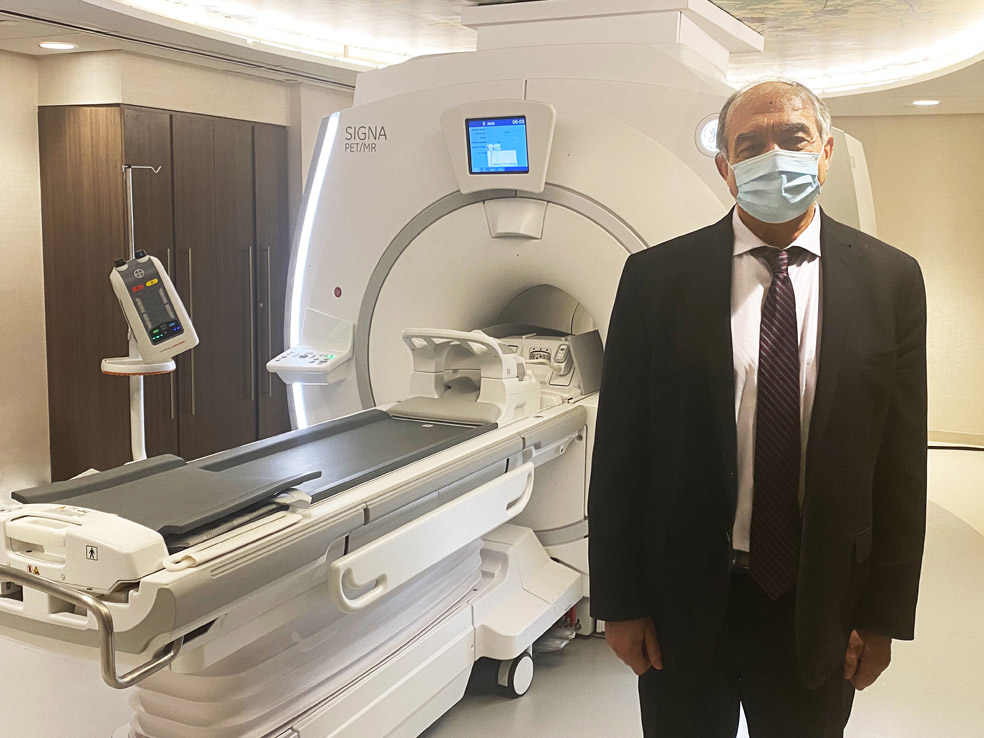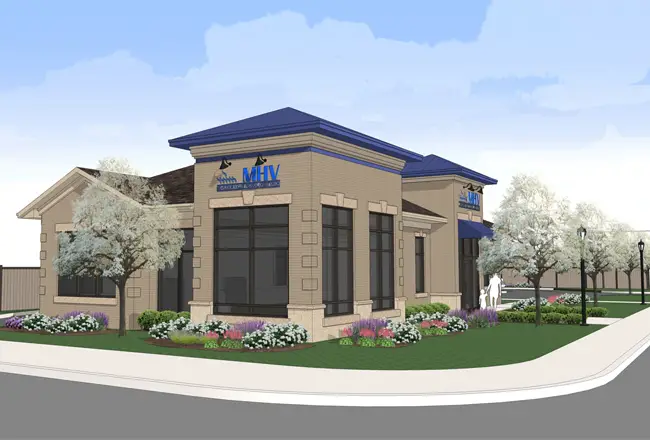Ever since Wilhelm Conrad R̦ntgen discovered X-rays in 1895 and a doctor used the discovery to create a picture that revealed a fractured bone in someoneӪs hand, a focus of the medical profession has been on developing tools to generate sharper, more detailed, more revealing images of whatӪs happening inside of the human body.
Now, a new world of imagery is opening up with a new breed of scanners combining the technologies of PET (positron emission tomography) and MRI (magnetic resonance imaging). White Plains Hospital is the first in the county and one of only about 115 institutions worldwide to have a PET MRI scanner.

The scanner is in operation at the hospital”™s recently opened $272 million nine-story Center for Advanced Medicine & Surgery at 122 Maple Ave. in White Plains.
“When you combine both you”™re having the very best imaging possible,” Dr. Andre Khoury-Yacoub, co-director of radiology at the hospital told the Business Journal. “When the patient is having a study done, he or she is in the same physical position as when having an MRI study.”
Khoury-Yacoub said that the new scanner uses 50% less radiation for its PET function than with older standalone CT (computed tomography) scanners while providing more accurate images for use in diagnosis and planning of treatments.
“Cancer patients will have numerous studies done during the course of the disease,” Khoury-Yacoub said. “Instead of having multiple CT scans as they used to have before, when you do PET MRI over the course of the disease you decrease significantly the radiation exposure to the patient.”
He said that while older standalone MRI scanners often exposed patients to a high noise environment while they were running, the new PET MRI scanner uses noise suppression techniques.
Khoury-Yacoub said that when bringing the new technology to the hospital was first proposed, hospital management was immediately supportive. The scanner cost $4.4 million, slightly more than the cost of buying separate older-technology CT and MRI scanners.
“I think it”™s expensive, but for doing both modalities at the same time I think it”™s reasonable,” Khoury-Yacoub said. “The PET MRI is one of the biggest advances. It”™s going to be very important in the years to come.”
He emphasized that imaging plays a vital role in treating cancer, from identifying where the disease is located in the body to providing information to help in staging the fight against the cancer cells to determining whether the medical intervention is effective.
Khoury-Yacoub said that White Plains Hospital has always been interested in adopting the latest and most effective technologies.
“These new technologies are going to be helpful for all departments because this applies to all fields of medicine. We”™ll use it for oncology, gastroenterology, neurology,” Khoury-Yacoub said. “We are the only hospital in the county that has this technology. Here in New York we”™re the only ones outside of the city. We plan on partnering with referring physicians as well.”
He said that the highly detailed images of the brain that are possible with the new scanner will make it very useful in identifying and treating Alzheimer”™s disease.
“We can detect the disease early enough, even before an ordinary MRI, and this will be very important for early treatment of Alzheimer”™s. It”™s going to help improve health care significantly in our later aging,” Khoury-Yacoub said.
The PET MRI scanner also is expected to benefit pediatric patients. Rather than subjecting children to separate PET and MRI scans, the scanner means they only have to go through the imaging experience once.
The hospital is conducting an information campaign, including sending out samples of the images that can be generated by the scanner to make sure the area”™s medical community is aware of the advanced technology that”™s now at its disposal.






















